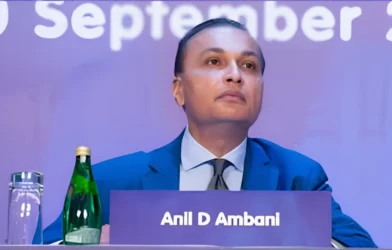The cryptocurrency scene in India is subtly changing. Crypto futures trading and perpetual derivatives are thriving under the radar, while spot cryptocurrency trade has stalled due to high taxes and regulatory uncertainty. With products designed for Indian investors looking for leverage, flexibility, and tax benefits, traders, platforms, and even new exchanges are capitalising on this transformation.
The Ascent of Crypto Futures Trading in India
Cryptocurrency futures trading has expanded quickly over the past year, frequently surpassing spot trading volumes. Several factors are fueling this change.
First, one of the main drivers is taxation. Spot cryptocurrency trade profits are subject to a flat 30% tax, and each transaction has 1% tax deducted at source (TDS) applied to the entire amount. Additionally, spot trade losses are not necessarily deductible from other sources of income, which makes it challenging for active traders to maximise profits.
Many crypto futures contracts, on the other hand, are exempt from the stringent “virtual digital asset” (VDA) tax regime. Gains can be used to offset losses because they are frequently viewed more flexibly, sometimes as business revenue. For serious investors, this makes trading futures much more alluring.
Second, leverage is possible with futures. With leverage often ranging from 10× to 50×, traders are able to open positions that are several times greater than their initial capital. Some see this as a chance for greater benefits. Others run the danger of suffering quick losses as a result.
Lastly, futures settled in rupees (INR) are now available on a few Indian exchanges. These platforms collect margins in Indian rupees (INR) rather than requiring investors to convert to stablecoins like USDT first. This makes trading easier, less expensive, and less susceptible to currency volatility.
Platforms in the Lead
Many companies are acting swiftly to take advantage of this trend. For instance, Pi42 has established itself as one of India’s first cryptocurrency perpetual futures exchanges to accept INR payments. Its methodology is designed to assist domestic merchants in avoiding the hassles of handling dollar-based settlements and international exchanges.
Additionally, well-known exchanges like CoinDCX, CoinSwitch, Giottus, and Mudrex are expanding their derivatives and futures product lines. They are luring customers away from spot trading by emphasising reduced fees, excellent liquidity, and straightforward onboarding procedures.
These changes point to the maturation of India’s cryptocurrency market, where companies are coming up with creative ways to maintain onshore trade in spite of unclear regulations.
Why It’s Taking Place Silently
The expansion of cryptocurrency futures is still mostly unknown despite the spike. This is because there are still ambiguous regulations in this field. For spot cryptocurrency transactions, the government has established explicit regulations, but futures are still unclear. Although some investors see this as an opportunity, there is a risk involved as well because regulators or tax authorities could intervene at any time to eliminate loopholes or enforce more stringent compliance standards.
And there’s the awareness problem. Derivatives are still unknown to many casual investors. Understanding margins, leverage, and risk management is necessary for futures trading. Traders risk rapidly losing money without this. Because of this, platforms typically target more affluent investors with their marketing instead than the broader public.
Risks That Investors Need to Think About
Even if cryptocurrency futures are growing, there are still a lot of risks:
- Regulatory risk: The present advantages could be altered if authorities reinterpret tax treatment or explicitly place cryptocurrency futures under the VDA system.
- Leverage risk: Excessive leverage has the potential to transform minor losses into catastrophic ones. Retail investors may be taken by surprise if they don’t comprehend this.
- Risks associated with counterparties and liquidity: Not all platforms have sufficient protections or large liquidity pools, which can cause trading volatility.
- Tax ambiguity: Previous trades may be examined, and interpretations may shift even if futures are now more advantageous.
The Path Ahead
There are a number of potential consequences in the future. The taxation of futures contracts may be clarified by policymakers, increasing certainty but possibly diminishing the benefits that are currently available. It’s possible that other local platforms may join the market, offering contracts settled in rupees and fiercely competing on features and prices. While many experts warn that risk management education is crucial, retail engagement may increase as awareness grows.
As of right now, the quiet surge in cryptocurrency futures is a reflection of traders’ flexibility as well as the inventiveness of Indian platforms. Futures are likely to thrive under the radar as long as there remain regulatory voids.
Disclaimer: This article should not be interpreted as financial or investment advice; rather, it is meant to be informative only. The possible loss of funds is just one of the many risks associated with trading cryptocurrency and futures. Platforms like Pi42, CoinDCX, CoinSwitch, Giottus, and Mudrex are mentioned for context only; they are not necessarily recommended. Before choosing to invest in the cryptocurrency market, readers are strongly encouraged to speak with legal and financial professionals.









